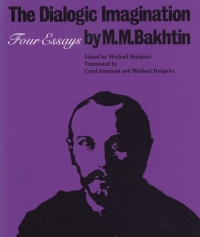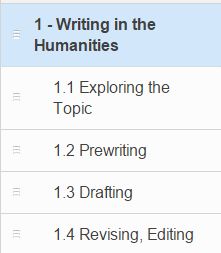Although initially separate in both their historical and pedagogical nature, rhetoric and composition found a commingling in the twentieth century, leading to the creation of a sub-discipline within English Studies that has gained strength especially over the past fifty years within the university setting.

The GI Bill encouraged veterans to go to college, which in turn, led to English Studies’ focus on writing. Source: FDR Library
Whereas, over the centuries, literary studies predominated the greater part of English studies, leading to countless positions on critiquing literature, from the works of Horace to Harold Bloom, the post-World War II generation saw an emergence of American scholars “disillusioned by humanistic values ability to save the world,” who sought to educate the middle class, especially as the GI Bill offered to pay veteran men and women to attend colleges and universities (McComiskey 24). These scholars, according to Connors in his Writing The History of Our Discipline, realized that this new class of degree-seeking individuals brought new ideas and expectations to the English classroom, resulting in professors embracing the once departmentally marginalized composition studies and unwavering in their determination to “study composition, analyze it, and try to do it as best it could be done” (qtd. in McComiskey 25).
Lauer’s narrative regarding the particulars of combining rhetoric with composition studies indicates that interest in returning rhetoric’s connection to writing in the 1960s came out of the founding of the interdisciplinary Rhetoric Society of America and the organization’s discussion about rhetoric’s connection to composition among some of its members, such as Edward Corbett, Ross Winterowd, Richard Young, Janice Lauer, and Richard Larson (McComiskey 109). Additionally, she highlights Robert Gorrell’s meeting with like-minded educators at the 1964 Conference on College Composition and Communication (CCCC) to discuss the “new interest in rhetoric and its linkage with composition” (McComiskey 108).

University of Nevada Professor Bob Gorrell described rhetoric as both a weasel and a whale in his 1965 article. Source: University of Nevada Libraries
To demonstrate the determination of the CCCC’s group on this subject, a look at Gorrell’s account of the conference meeting, found in his 1965 article “Very Like a Whale—A Report on Rhetoric,” describes rhetoric as a “weasel” since the group meeting at the CCCC found it difficult to nail down a firm definition—it is, after all, at once both a “theory of communication” and a “body of precepts and advise” (140)—but he concludes that although full of blubber, rhetoric is solid, “very like a whale,” and “deserves more emphasis in the training of teachers . . . [and] that graduate students should have work in rhetorical theory as well as practice in writing” (143). Lauer expands on this “watershed event” regarding rhetoric and composition’s new found marriage, commenting on the involved scholar’s goals to reconnect rhetoric’s ancient roots to composition studies. That is, she writes, they aimed to teach students to apply ethos, pathos, topics, and status within discovering rhetorical situations; employ “informal enthymemes and examples” in lieu of syllogisms; and understand kairos (McComiskey 108).
Seemingly, after the growing initiative in the 1960s to infuse rhetoric into composition studies, scholarship burgeoned in the late 1960s through the early 1980s, giving rise to rhetoric and composition as a formal discipline within the university, including degree programs at University of Michigan and courses at Ohio State, followed by doctoral programs in the late 1970s at the University of South California, Rensselaer Polytechnic Institute, and University of Louisville (McComiskey 110). Nystrand and colleagues detail this rise of the discipline, discussing the field’s co-opting of cognitivism and constructivism in the late 1960s through the early 1980s. The works of Moffett, Britton, Emig, Flower, Hayes, Fish, and Chomsky proved hallmarks for the constructivist view, which situates writing and reading as “dynamic processes of constructing meaning”; orders language and “gives shape and thus meaning to experience”; and validates “the role of mind in shaping human experience” (Nystrand, Greene, and Wiemelt 285).
Then, in the 1980s, social constructionism influenced rhetoric and composition through the work of linguists William Labov, Dell Hymes, and John Searle. Following suit, composition research from the likes of Shaughnessy, Bruffee, Bizzell, and Bartholomae enlightened this social constructionist epistemology within rhetoric and composition, and terms and ideas, such as writing as social act, writing across the curriculum, and discourse communities, became popular (Nystrand, Greene, and Wiemelt 285).
In the 1990s, theory in rhetoric and composition shifted from structuralism to post-structuralism. Dialogism, rooted in the work of Bakhtin, gained strong footing with scholars in the field, focusing on how “meaning of any utterance is always relative to other utterances” in a dialog of sorts (Nystrand, Greene, and Wiemelt 296).

Bakhtin’s dialogism influenced post-structuralism in rhetoric and composition. Source: Amazon
Important theorists, such as Barthes, Brodkey, Derrida, and Foucault “come out of this wave of thought and argue that knowledge and meaning are socially constructed, context dependent, political and historical—and therefore unstable, partial and multiple” (Nystrand, Greene, and Wiemelt 300).
The post-structuralist movement, running parallel with postmodernism, also produced the theory of post-process within rhetoric and composition. About this theory, Breuch writes that the “dominant contention of post-process scholars is that process has come to represent Theory with a capital ‘T'” (119), and, therefore, in a good postmodernist view, which denies absolutes, process in writing, then, becomes a meta-narrative of sorts.
To reflect on this theory, post-process does seems rather unmanageable, especially in relation to first-year composition in a community college setting. Honestly, as I have examined the various schools of thought that make up the history of rhetoric and composition as an academic discipline, I cannot help but to (sadly) think that I am, in the classroom, often caught in that current-traditional model, that prescriptive mode of the five-paragraph theme, where pulling together paragraphs and catching catachresis can end up being the lesson or assessment of the day. Strangely, I am not necessarily a current traditionalist by choice, but it seems to be where the students need me to be.
Certainly, I teach that writing is messy, non-linear, and often un-formulaic, but by the same token, I often teach first-year college students the basic process of exploring the topic, pre-writing, drafting, and revising and editing.
In fact, I just finished developing a Quality Matters course for first-year composition (that many faculty will be required to use), and that process is exactly how each unit is set up. Does this make me an educator that’s out of touch with the current trends in the field? I mean; that’s not honestly how I approach writing myself, and my personal worldview has a postmodern lilt to it. So, who exactly is the audience for this post-process, post-structural, postmodern way of teaching? Is it for the bourgeois intellectuals who are post-everything? Or could it be that, ironically, even good rhetoricians do not always know their audience, or at least they do not fully state it?
All that said, I continue to ponder my pedagogy and theories of approaching rhetoric and composition, and, like Gorrell’s weasel, it sometimes eludes me. Likewise, like his whale, I find the discipline’s epistemology often solid but sometimes full of blubber. Now, if I could just fit a wallaby in there somewhere to keep with the alliterative animal metaphors.
Works Cited
Breuch, Lee-Ann M Kastman. “Post Process ‘ Pedagogy’: A Philosophical Exercise.” jac 22.1 (2002): 119-150. Web. 15 Sept. 2015.
Gorell, Robert. “Very Like A Whale–A Report on Rhetoric.” College Communication and Composition 16.3 (1965): 138-43. Web. 17 Sept. 2015.
McComiskey, Bruce. English Studies: An Introduction to the Discipline(s). Urbana, Ill: National Council of Teachers of English, 2006. Print.
Nystrand, Martin, Stuart Greene, and Jeffrey Wiemelt. “Where Did Composition Studies Come From? An Intellectual History.”Written Communication 10.3 (1993): 267-333. ERIC. Web. 10 Sept. 2015.

